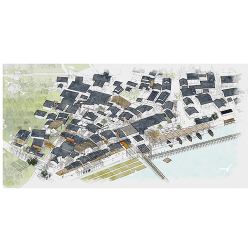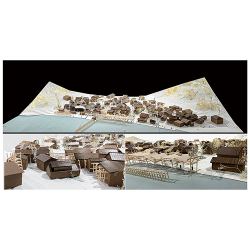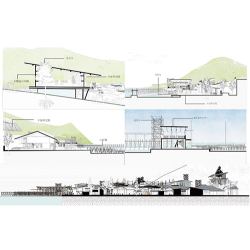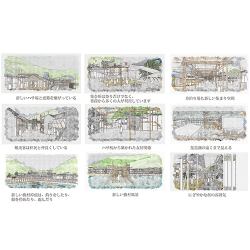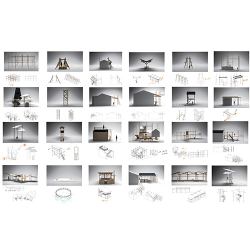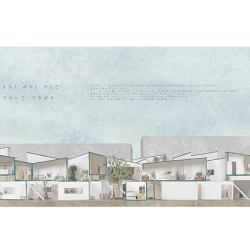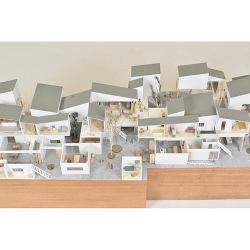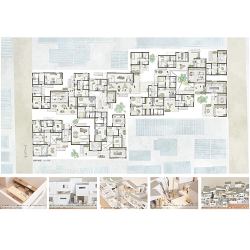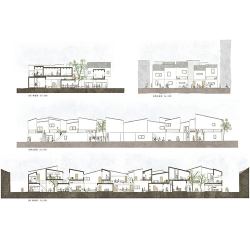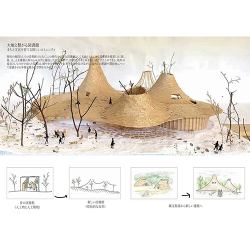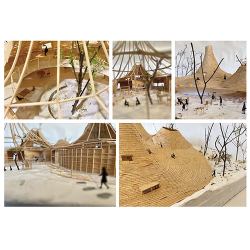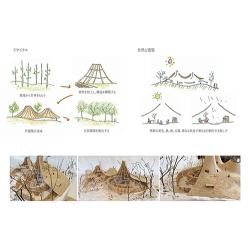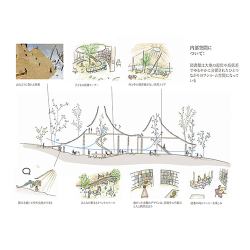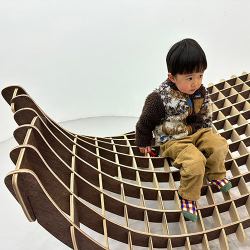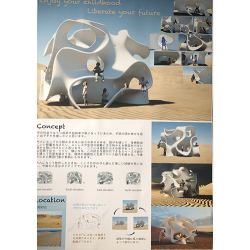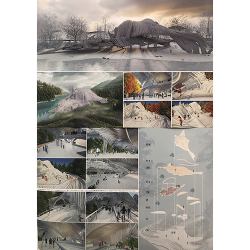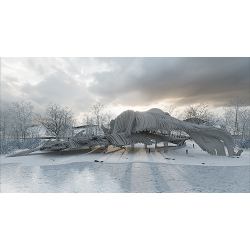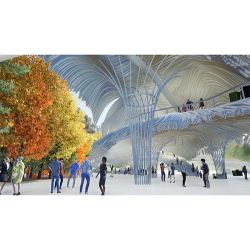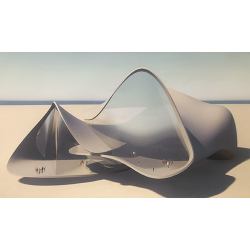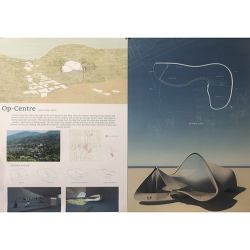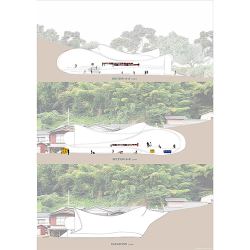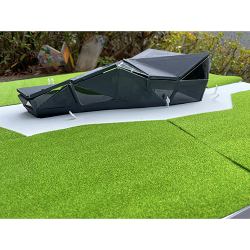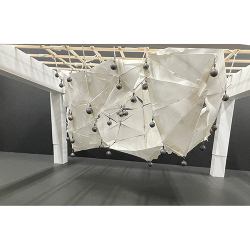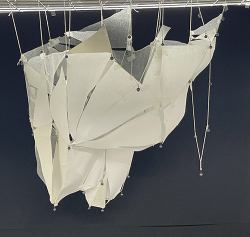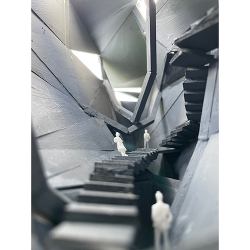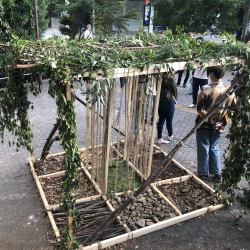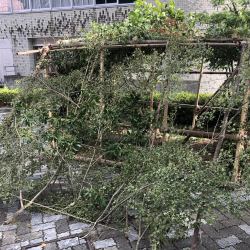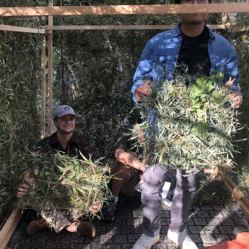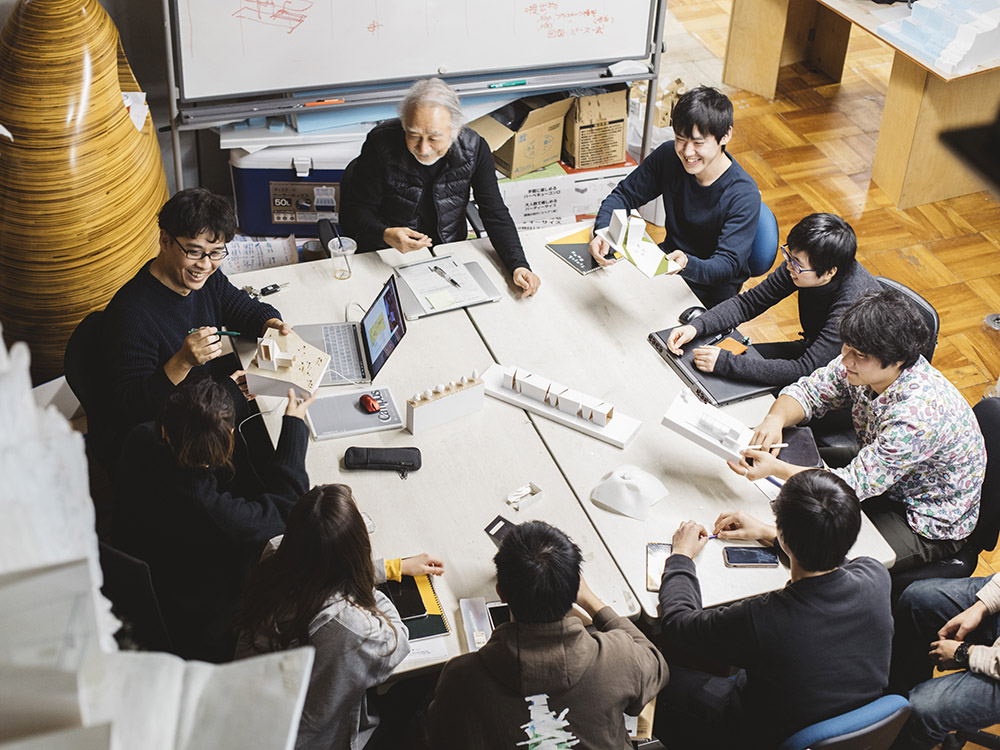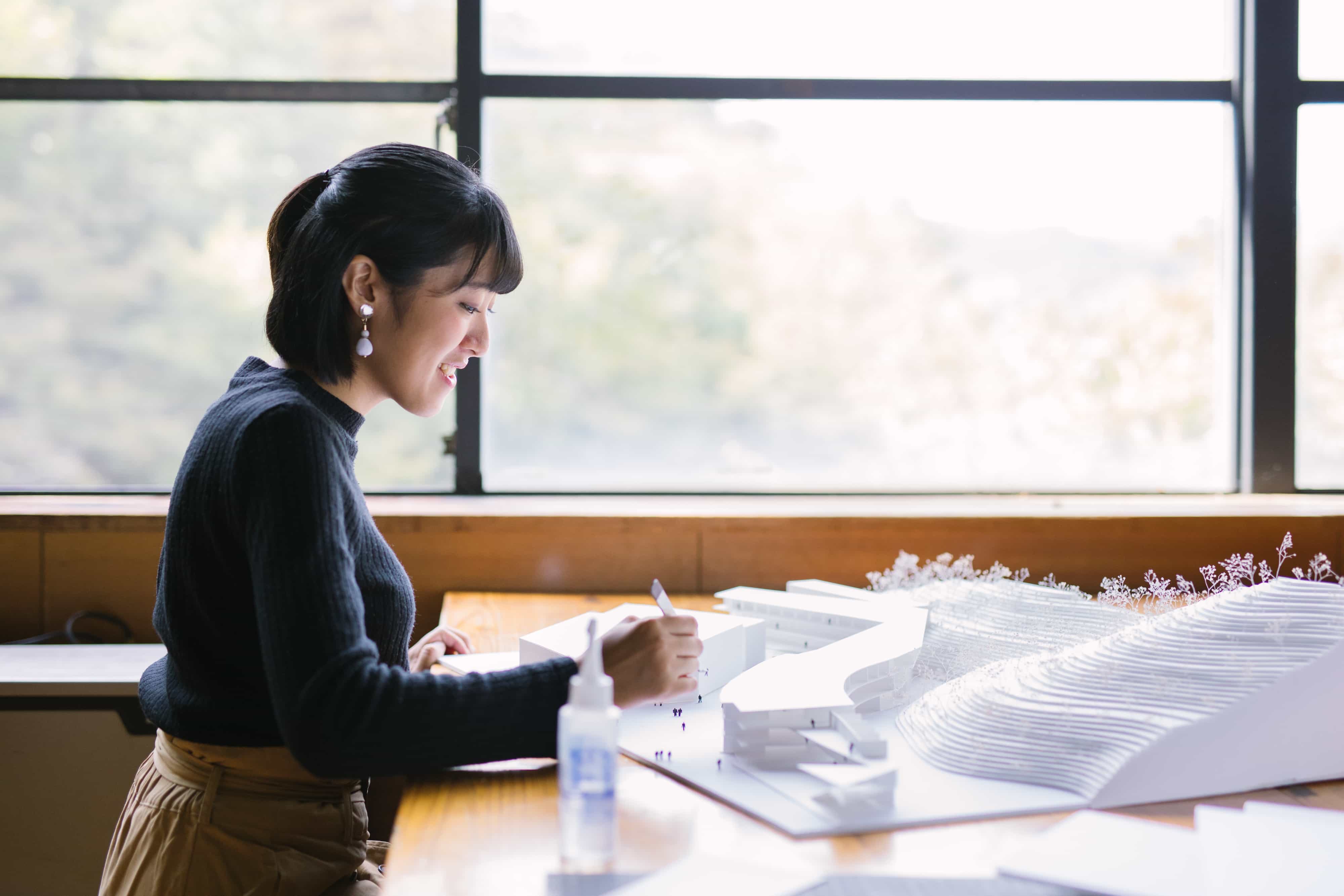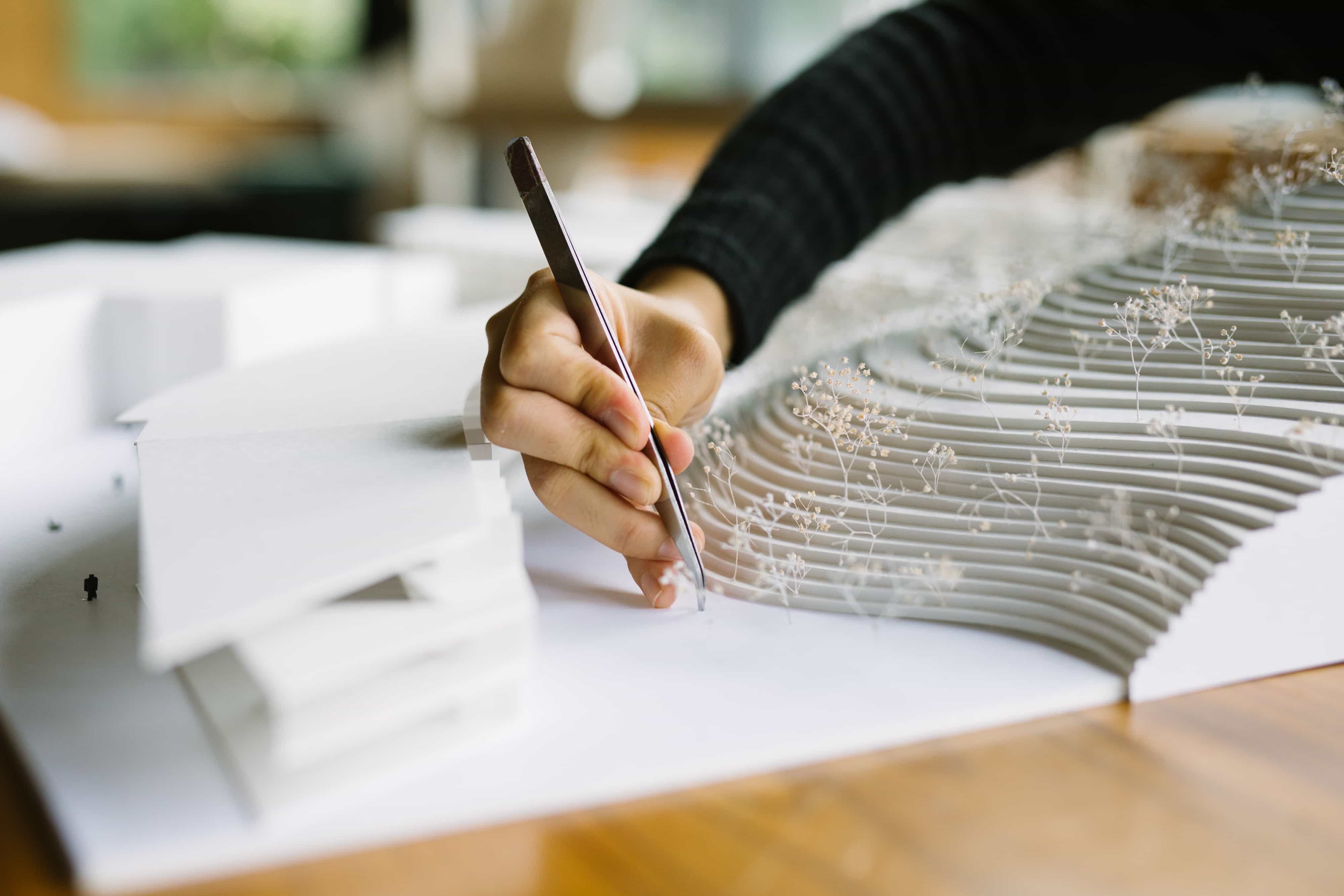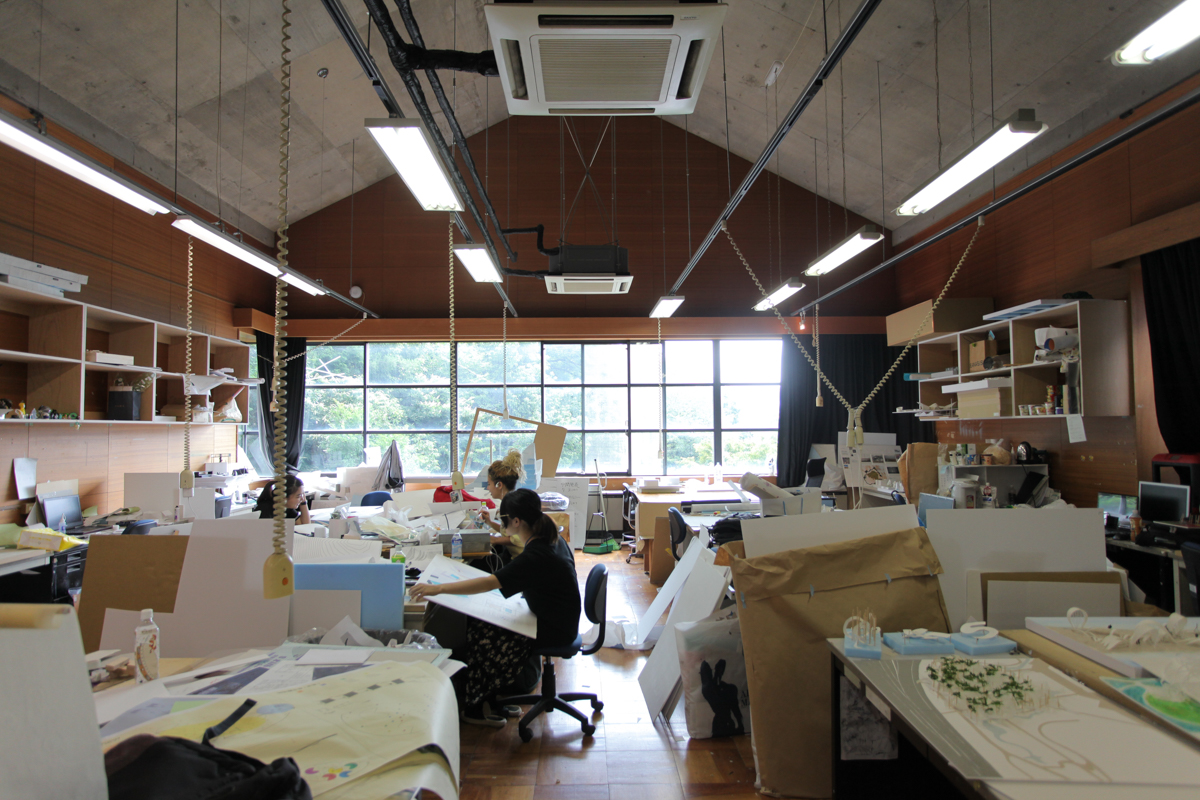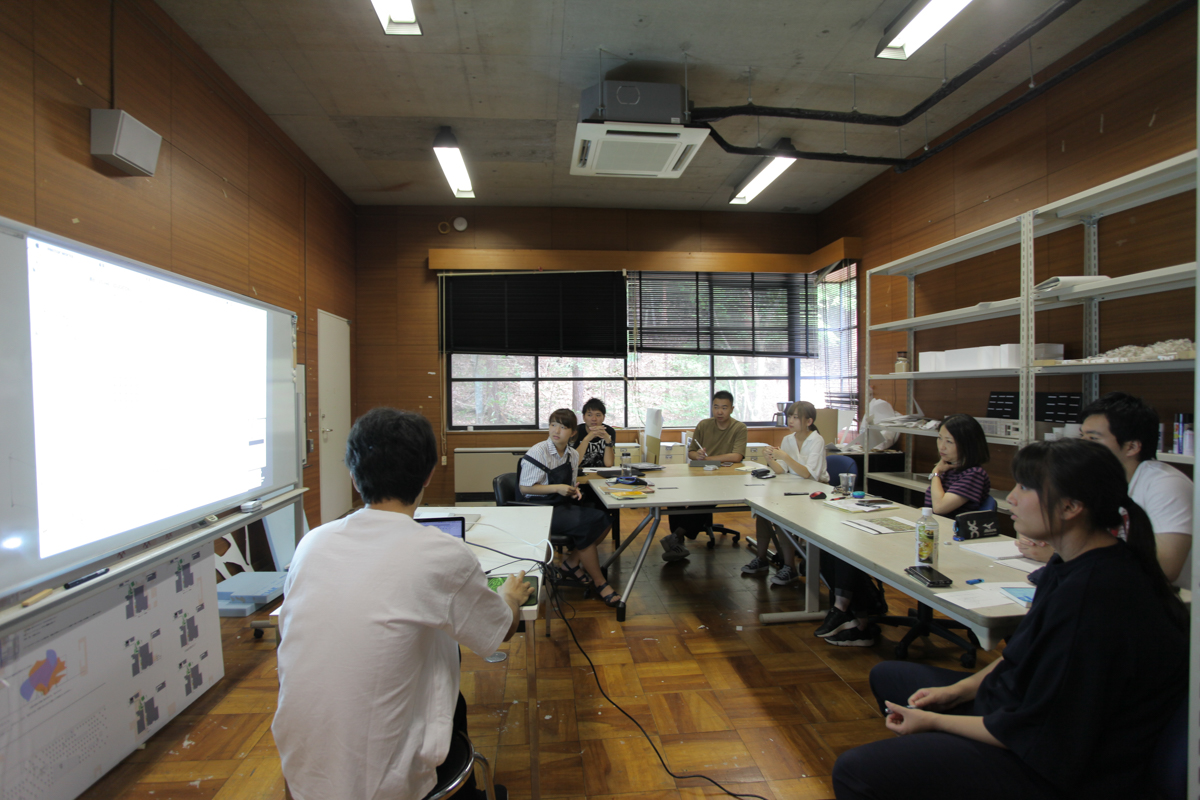Training architects who design society in its entirety
Subject Highlights
-
Learn the basics of architecture in English to succeed globally.
[Basics in Architectural Design 2 / Year 1]
Students learn the basics of architectural design and develop the ability to plan and construct spaces to meet requirements such as usage, site, scale, and relationships. Lectures, assignments, presentations, and reviews are all conducted in English with the goal of equipping students with the abilities needed to succeed in a wide range of roles, both in Japan and overseas. -
Recreating a two-dimensional collage in three dimensions to train a sense of scale.
[Basics in Architectural Design 4 / Year 2]
Students create collages that place foreign objects in the landscape, such as a giant spoon in a classroom or a ruler filling a bathroom, then develop these collages into spatial artworks.This helps students acquire the ability to resize the scale of an object in their mind as well as develop skills such as imagination and planning.

What You Will Study
-
1STYEAR
Developing skills, creativity, and English ability
Students work on assignments under a variety of conditions and learn the basics of design, developing their ability to come up with new ideas as they pursue new forms of architecture.There are also classes where students learn practical skills in English.
-
2NDYEAR
Fostering imagination
Students are challenged to develop their vision for society, including the Kyoto of the future, new architecture, and the landscape of daily life.Students acquire the ability to design architecture that is in touch with its human users and their everyday lives.
-
3RDYEAR
Learning in a studio setting
Students are split into groups, each led by a faculty member who is an architect, where they engage in deeper learning in similar environments to real architecture studios.We also offer the opportunity for students to have their work reviewed by prominent architects.
-
4THYEAR
Giving shape to ideas through the graduation work
Students continue their studies in a studio environment.Using the knowledge, skills, and imagination they have cultivated over the previous four years, they engage in their graduation work to propose, as architects, a vision for the future of society and the way we live.
What You Will Learn
- Knowledge of the human body, space, architecture, and cities
- Planning and practical expression skills to address real-world issues
- Globally-minded design and communication skills
Facilities
Kyumei-kan
The Kyumei-kan is the dedicated studio for the Architecture Course,featuring a complete range of equipment for processing essential architectural design materials such as wood, metal, and resin, enabling students to construct architectural models, furniture, and other items.
PICK UP!
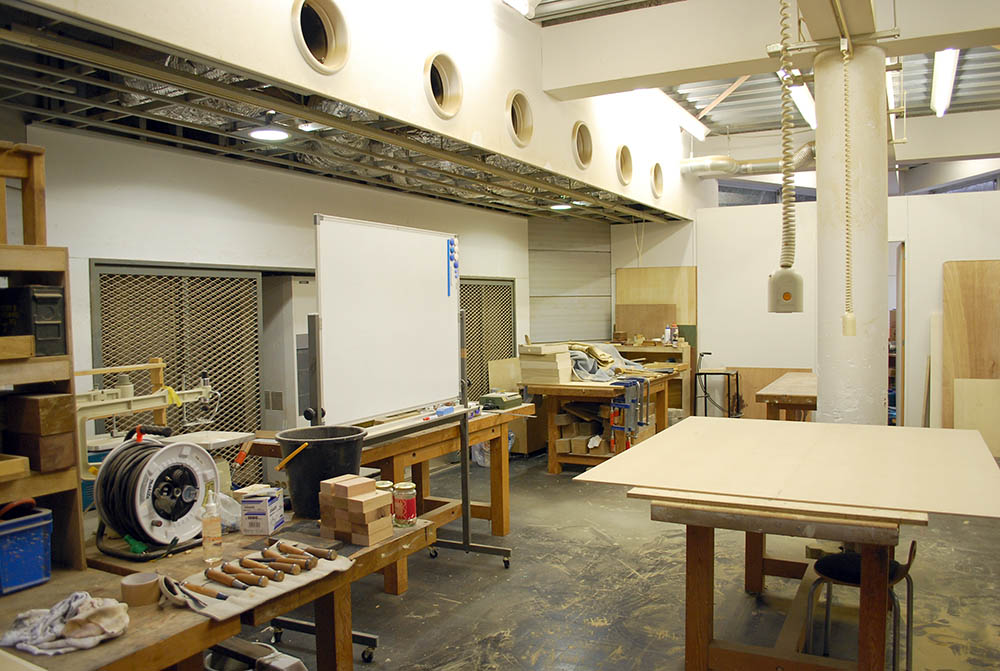
-

The workshop is filled with drawings and models for an atmosphere similar to that of an architectural office.
Photo Gallery
Careers
- An architect who can design everything from residential to commercial facilities and even cities
- Interior designer
- Furniture and lighting designer
- Producer of facilities such as restaurants and boutiques
Voice
-
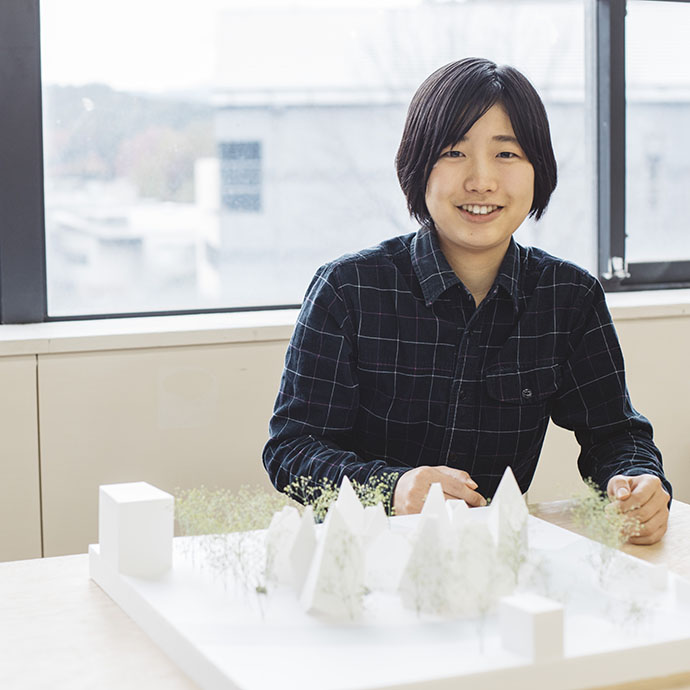
KINOSHITA Hiroka Current Student My aim is to become an architect who creates interaction between people and nature.
I used to want a career in welfare, but I became interested in architecture in high school.I was working as a volunteer assisting people in wheelchairs when I began to notice the steps and ramps in buildings.I did some research and discovered the various intents and purposes behind accessible designs. I became fascinated by how profound architecture is.Architectural design doesn’t just have to look good. It also has to enrich the lives of the people who use it.On the advice of my teacher, whenever I’m planning a building or space, I always visit the location I’m going to model to observe the streetscape and the lives of the people there.I feel that experiencing the local atmosphere firsthand lets me create designs with a sense of reality.My current focus is architecture that coexists with nature.I grew up in Nagano Prefecture, and the rich, natural environment there is something that helps my diet and soothes my soul.With all the recent attention on environmental destruction, I would like to propose the appeal of living close to nature from an architectural perspective.I’ve been offered a job as a designer at a construction company back in Nagano after I graduate.I would like to contribute to the development of my hometown while at the same time continuing to explore the symbiosis between humans and nature. -
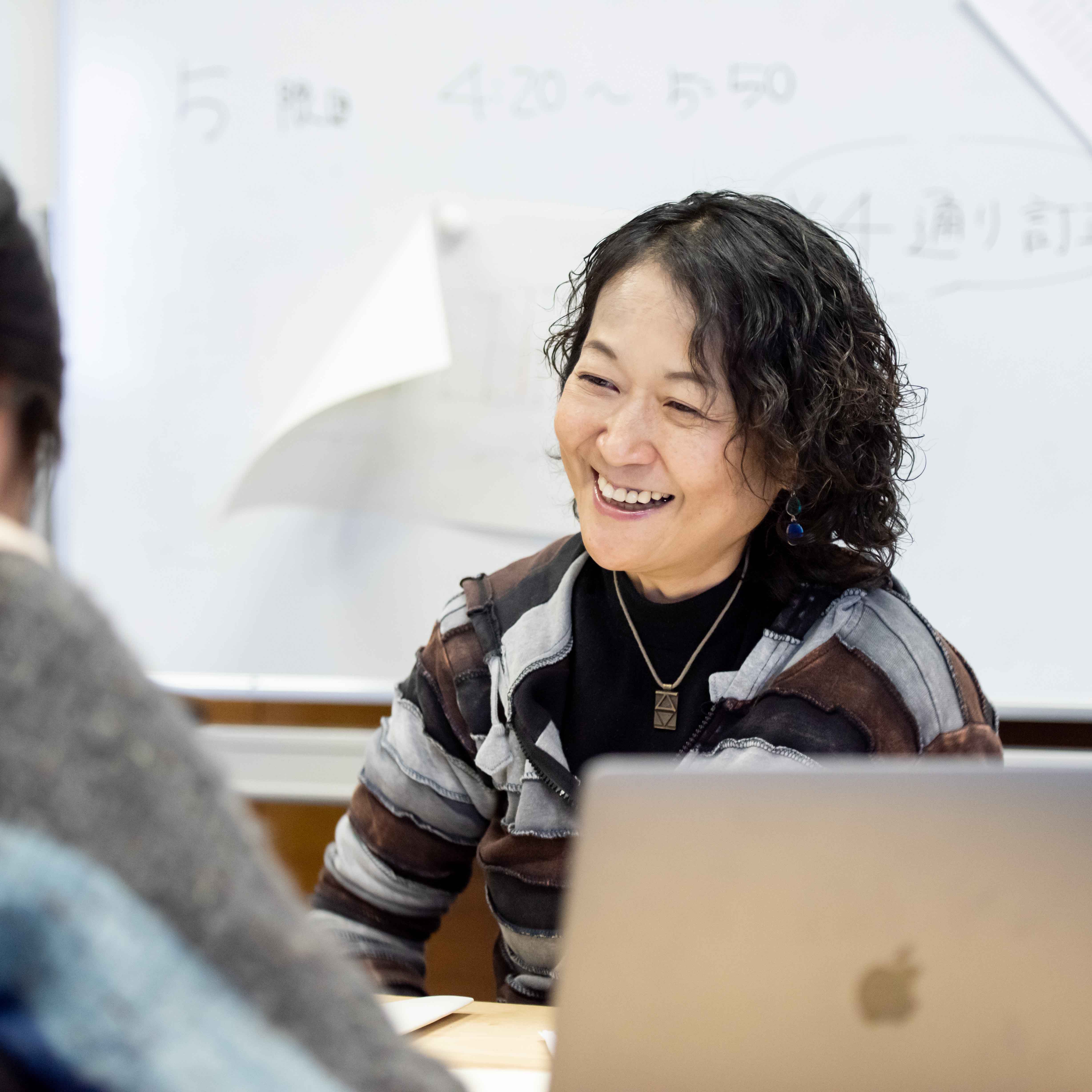
TAKAMATSU Itsuki Academic Faculty Architecture begins with thinking about people.
Together with my work at Kyoto Seika, I also design residences and nursery schools as an architect.The world of architecture encompasses a broad range of different elements.From buildings like houses and public facilities to objects small enough to fit in the palm of your hand, to great cities filled with enormous buildings—these are all examples of architecture.When we, as architects, think about this wide world, we begin by thinking about people.We create our designs bit by bit, constructing spaces as we think about the people who will live there.That's the job of an architect.I would recommend this profession to anyone who loves making things and cares about others.The wonderful production environment available at Kyoto Seika is one of the appeals of the Architecture Course.Our facilities are well-equipped, and the faculty members value the freedom of students’ imagination.Your ideas will know no bounds as long as you have the desire to keep creating.I really want students to experience the joy of seeing an idea from their heads transformed into actual work and discovering in it spaces that they themselves had never even imagined.Another feature of the course is its rich international element.There are overseas study tours and many other opportunities for students to interact with people from a range of different countries.Students acquire the ability to think deeply and communicate through encounters with new knowledge, people, and worlds they never knew before.


